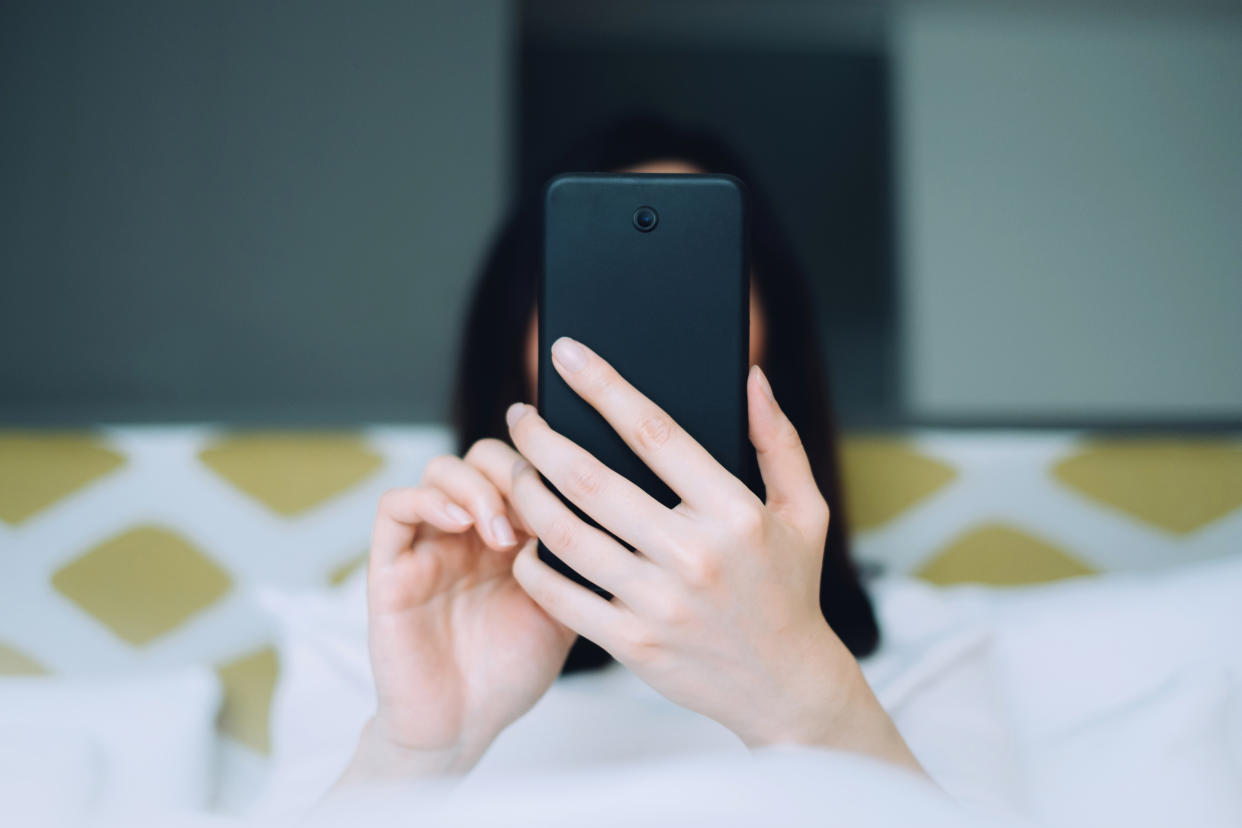The news cycle has been intense. Should you be hope-scrolling instead?

Bailey, a Boston-based golden retriever, goes for walks only carrying a giant stuffed carrot. Crystal Rogers came across Bailey when he was featured as one of We Rate Dog’s top five dogs of the week, a video compilation she looks forward to watching every Friday. Accounts like We Rate Dogs are a bright spot for Rogers, a developmental biologist whose feed otherwise often feels overwhelming.
“I have insomnia constantly, and normally when I’m scrolling in the middle of the night, it’s just [coming across] what else is unprecedented and terrible," she tells Yahoo Life. For Rogers, that ranges from news about rising temperatures and scary weather events to political division that could impact her son’s future. But amid all that, there are still cute animal videos to watch.
Like Rogers, many social media users are seeking out more positive content as an antidote to compulsively consuming the constant, mostly bleak updates and discourse about war, politics and climate change. Meet "hope-scrolling," the feel-good alternative to the downer that is "doom-scrolling."
What is hope-scrolling?
“I first heard about this back in 2021 or so, and at that time some psychologists were calling it kindness-scrolling," says Kim Penberthy, a professor of research in psychiatric medicine at University of Virginia’s School of Medicine.” She points to an early pandemic study that found “it really does matter what you’re looking at online." Even just two minutes of doom-scrolling pandemic-related content was shown to have a negative impact on one’s emotions compared with looking at acts of kindness.
From kindness-scrolling to TikTok’s #Hopecore, hope-scrolling has taken on many forms over the past few years. “Hope-scrolling can have different names, but I think all of these behaviors … are all pointing at [the idea of] 'let’s use social media in a more positive way, in a way that can improve our well-being,' because exposure to all catastrophic and depressing content cannot do that,” Laura Marciano, a research scientist at the Lee Kum Sheung Center for Health and Happiness at Harvard’s T.H. Chan School of Public Health, tells Yahoo Life.
Unlike doom-scrolling — when people scroll through social media with a focus on distressing, negative or timely news — hope-scrolling is looking at positive content, and Marciano wants people to understand that both types of social media engagement affect people’s moods. “As negative content can drive negative emotions like anxiety, positive content through hope-scrolling can drive positive emotions like optimism and even joy, happiness and relief,” she says.
Why it's important to take a break from doom-scrolling
Even though hope-scrolling can leave people in a better mood, it may be easier for them to doom-scroll in the moment. Penberthy explains that humans are built with a negativity bias, an adaptive trait that probably helped keep our ancestors safe but is less useful now. “In today’s age we are exposed to all this negative [information] that we really don’t have any control over, and it’s not really helpful for us to be exposed to all the time,” Penberthy says.
This negativity bias is so strong that it matters not only what type of content you look at but also how long you look at it. “A small exposure of negative information can have bigger effect than a larger dose of positive information just because of how our brain works,” Marciano says.
Exposure to this negative news sends signals that we are in danger and that things are bad. It can impact both our mood — leaving us feeling anxious, depressed, demoralized or hopeless — and our body, which may begin to produce stress hormones that can negatively affect our physical health. These negative physical effects may become amplified when doom-scrolling at night because it interferes with our sleep, Penberthy adds.
How to introduce more hope-scrolling into your feed
Hope-scrolling is a key way to overcome this negativity bias, but it takes work to curate one’s algorithm to feed them more positive content. Ask yourself, “How do you feel when you’re looking at a piece of content, whether it’s something on TikTok or a reel," suggests Keneisha Sinclair-McBride, a clinical psychologist at Boston Children’s Hospital in Massachusetts. "If it’s giving you that little boost where you feel hopeful or happy or amused, that’s positive. If you’re hoping to have more a hope-scroll experience, then you’re going to want more of that content." Cute dogs, funny memes, low-stakes '90s nostalgia .... bring it on.
Part of this curation process can also be muting accounts of anyone (even if it's a friend) whose social media engagement leaves you feeling worse, adds Thea Gallagher, a clinical associate professor of psychiatry at NYU Langone Health. For example, Gallagher doesn’t want to follow influencers who are always making her feel like she needs to buy more stuff or engage in social comparison.
From inspirational content of people helping each other to videos of Taylor Swift’s surprise song performances or memes of Glen Powell and his dog, Brisket, the content that people find joyful will differ for everyone. What’s important is to remember that “you get to decide what you look at," Sinclair-McBride says. "You are in charge of your phone, and you can manipulate the algorithm back."


